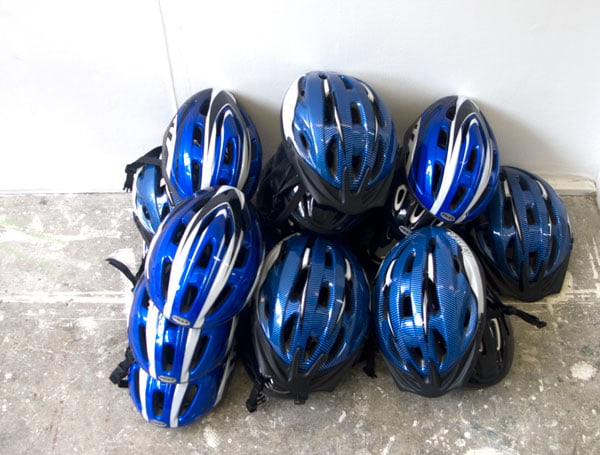Artful Ecologies 2 Art, Nature & Environment Conference |
The second Art, Nature & Environment conference organized and hosted by the RANE research group at University College Falmouth, took place over four days in July. The conference aimed to bring together leading members of the artistic community and the growing community of artists and researchers already engaging with RANE, to consider and discuss how artists might best address current ecological concerns.
Since the successful inaugural Artful Ecologies conference in 2006, any doubts that our planet’s ecology is now in real danger have been left far behind. Many now argue that we are on the verge of a crisis that could very soon turn to catastrophe. The number of different scenarios we now face, largely of our own making, all present harsh realities and paint bleak pictures of our future. These problems include the creation of a climate that will make large regions of the earth uninhabitable and force an unprecedented loss of species to rival the planet’s previous mass extinctions. Within a generation, toxic levels of pollution and the predicted population explosion will begin to place huge demands on limited resources, with potential shortages of food and water making survival for many an impossibility. The magnitude of the task ahead is almost impossible to imagine, harder still to tackle.
The focus of this conference was to ask whether there is a role for art to play in facing this impending ecological crisis. If, among other things, art is to be seen as a method for making sense of the world; as a means of interpretation and communication; as a way of exploring and proposing alternatives, then is there more for art to do than simply foreground the problems? What can artists do to provide solutions and address practical concerns? With our environment in crisis, what role for art?
In addition to the formal presentations and debates at the college’s Woodlane campus, delegates were also able to explore and enjoy the local surroundings such as the sub-tropical gardens at Trebah, Trelissick Gardens via the River Fal and The National Maritime Museum at specially organised evening events. These settings provided an ideal backdrop to informal discussion and networking.
A full programme of events was enjoyed by over 50 delegates from across the UK and beyond, which included fourteen international speakers. The conference closed on the Saturday with an open session and discussion in which delegates were able to respond to the previous three days of presentations. Papers from the conference are planned to be published by RANE later this year.
Reviews of the conference are now appearing on various blogs, websites and publications. A review of the published papers from the first Artful Ecologies conference which was launched in July has now appeared in the Landscape & Arts Network online magazine, and a PDF of the publication is available here.
The Speakers
These projects have appeared internationally on ABC’s World News Tonight, BBC’s Today Show and in Audubon Magazine, GENEWATCH, ESPACE Sculpture The Guardian, MIT’s LEONARDO Journal, The Journal of Experimental Zoology, The New York Times, Newsday, The New Yorker, Orion, Sculpture Magazine, The Sciences, The Village Voice, and others. His work has been included in several books including the new Art in Action: Nature, Creativity and our Collective Future, published by Earth Aware Editions supported by the United Nations. His Artworks have been exhibited in Australia, Asia, Europe and the Americas. Recent solo exhibitions of his work were held at The Arsenal Gallery in Central Park (NYC), The Peabody Museum of Natural History (Yale University), Archibald Arts (NYC), and Kunstverein Ingolstadt in Ingolstadt, Germany. An upcoming solo exhibition is planned for Yorkshire Sculpture Park (Wakefield, England). He participated in the 2004 Geumgang Nature Art Biennale in Kung Ju, South Korea the Waterways Project, which was installed at the 2005 Venice Biennale and Biennale for Electronic Arts Perth 07 in Australia. Ballengée has been awarded several artist grants including funding from the Puffin Foundation, Maxwell Landau Foundation, Nature Conservancy, New York State Council on the Arts, and others. He also has attended several artist/ researcher in residency programs. In 2003, he was an artist in residence at the Natural History Museum in London, Gunpowder Park and [space] in London in 2007, and the Société des arts technologiques [SAT] in Montreal, Canada in 2008. For over a decade, Ballengée has collected specimens for several scientific organizations, including the Peabody Museum at Yale University, The American Museum of Natural History, and the Museum of Vertebrate Zoology at U.C. Berkeley and others. In 2001, He was nominated for membership into Sigma XI, the Scientific Research Society. His theoretical article, ‘The Origins and Application of Artificial Selection’ is included in the 2004 anthology Biomedialepublished by the National Center for Contemporary Art in Kaliningrad, Russia. In January of 2002 and 2006, he co-taught an ecology art and neotropical evolution courses in Costa Rica for Hartwick College. In addition, he regularly conducts ecology/field biology/genetics and digital imaging workshops open to the general public at urban parks, zoos, petstores and fish markets. He serves on the board of directors for the Peoples Museum of New York. He currently is a Candidate for a Ph.D. at the University of Applied Sciences and Art, Hochschule für Gestaltung in Zürich, Switzerland. www.greenmuseum.org/ballengee |

















